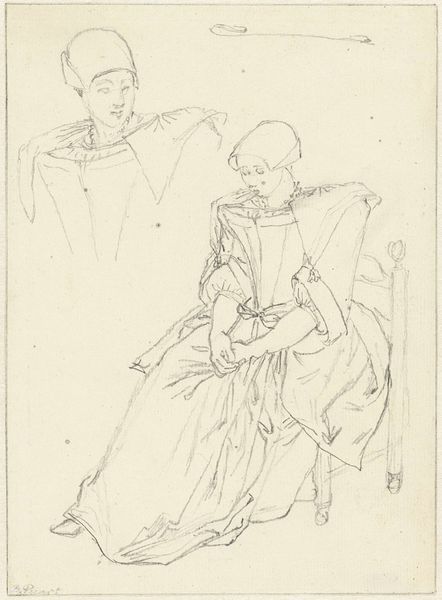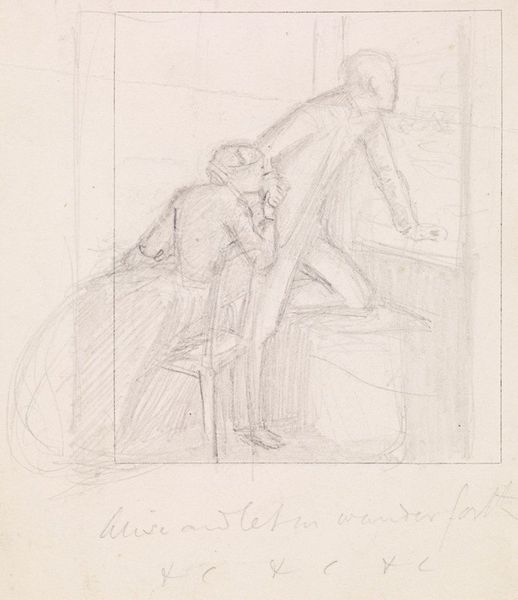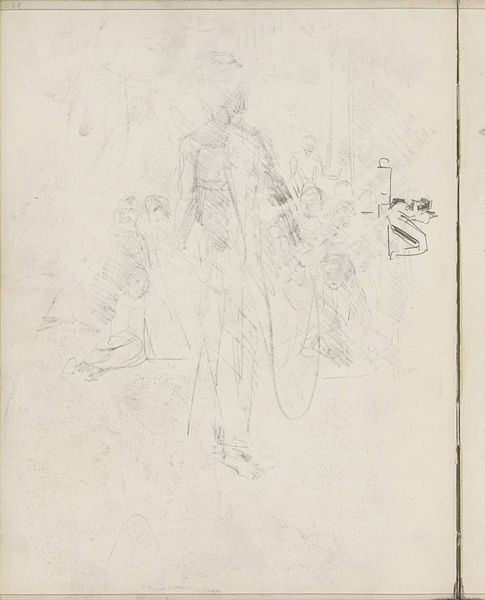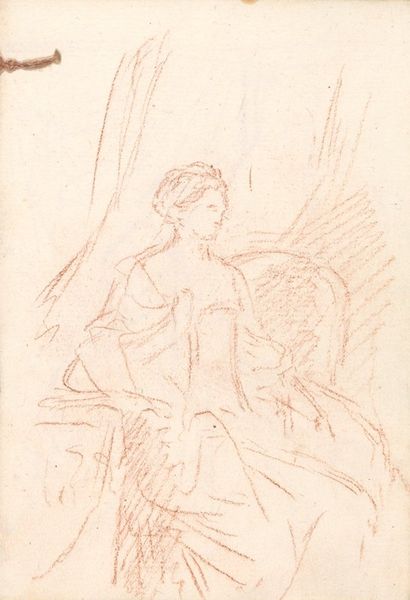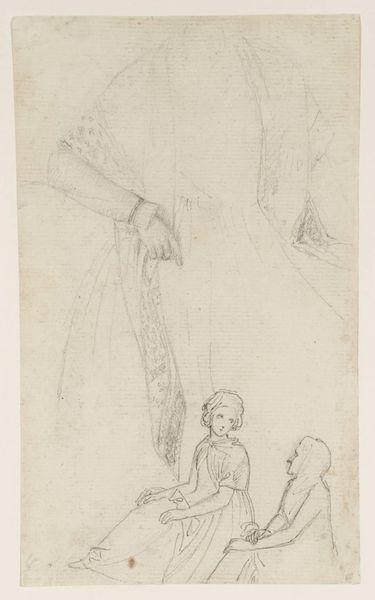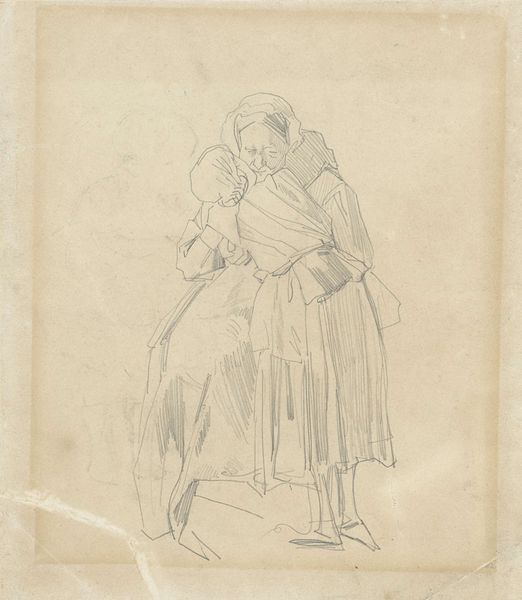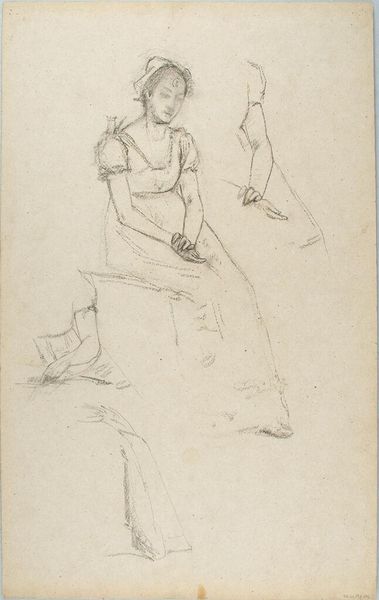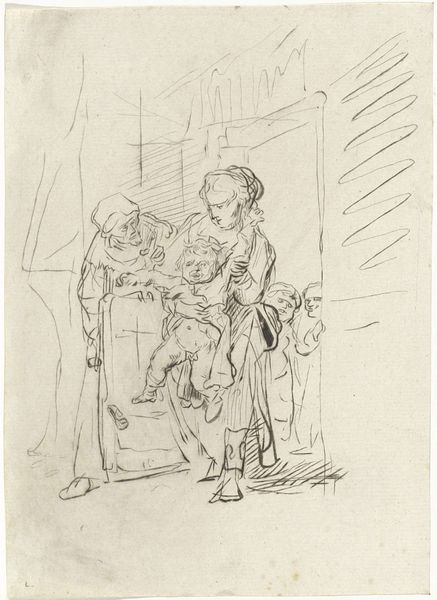
Studie voor het portret van de jonge prinsen Willem en Maurits c. 1847
0:00
0:00
drawing, pencil
#
portrait
#
drawing
#
pencil sketch
#
figuration
#
pencil
#
sketchbook drawing
#
pencil work
#
northern-renaissance
#
academic-art
Dimensions: height 270 mm, width 212 mm
Copyright: Rijks Museum: Open Domain
Editor: Here we have Nicolaas Pieneman's "Study for the Portrait of the Young Princes Willem and Maurits," dating from around 1847. It's a delicate pencil drawing, almost like a whisper. What strikes me is the immediacy, the visible process of creation. What can you tell me about it? Curator: The beauty of this study lies precisely in that raw, unfiltered quality you mention. Consider the materials: humble graphite on paper. These were readily available, linked to burgeoning industrial production. It is a sketch, after all, for a portrait of future leaders, yet the 'labor' to create the final work is made visible, undermining established artistic ideals tied to oil paints and intricate, expensive craft. Editor: So, you’re saying the medium itself plays a role in our understanding? Curator: Absolutely. Pencil, though common, facilitates both artistic study and industrial drafts; here, the artist is sketching the young Princes for a much larger portrait to showcase wealth, power and stability, even though these images circulate and promote ideas differently, often to distinct social groups. What does its "unfinished" state mean when a work is viewed outside a royal court, decades later? Editor: Interesting. The accessibility of pencil as a medium democratizes the process somehow. Does the subject – royalty – complicate this idea? Curator: Exactly! It prompts us to examine the function of art during this period, not solely based on academic criteria but in reference to the social context and mode of production. How does a readily available material portray future monarchs? Is this drawing accessible for only a few, or is its creation for many, through the creation and availability of the materials? Editor: That adds another layer entirely. So it’s not just a portrait of two princes, but also a reflection on the changing dynamics of art, production, and society at the time. Thanks. Curator: Precisely! Recognizing the materiality shifts our understanding of its cultural value and intended purposes within the political structure.
Comments
No comments
Be the first to comment and join the conversation on the ultimate creative platform.
